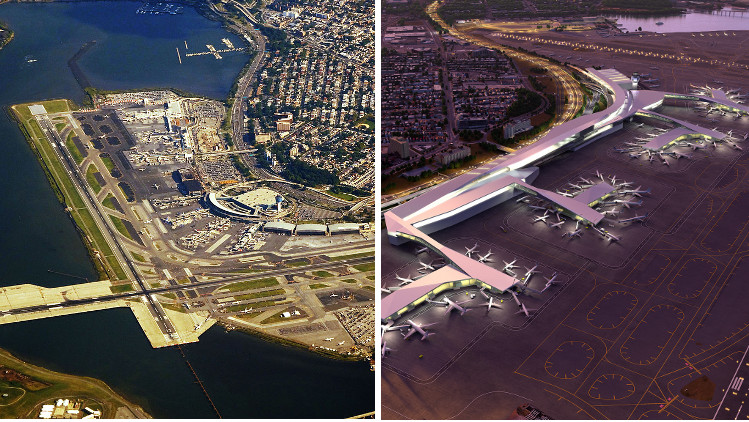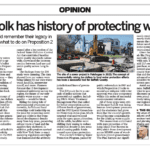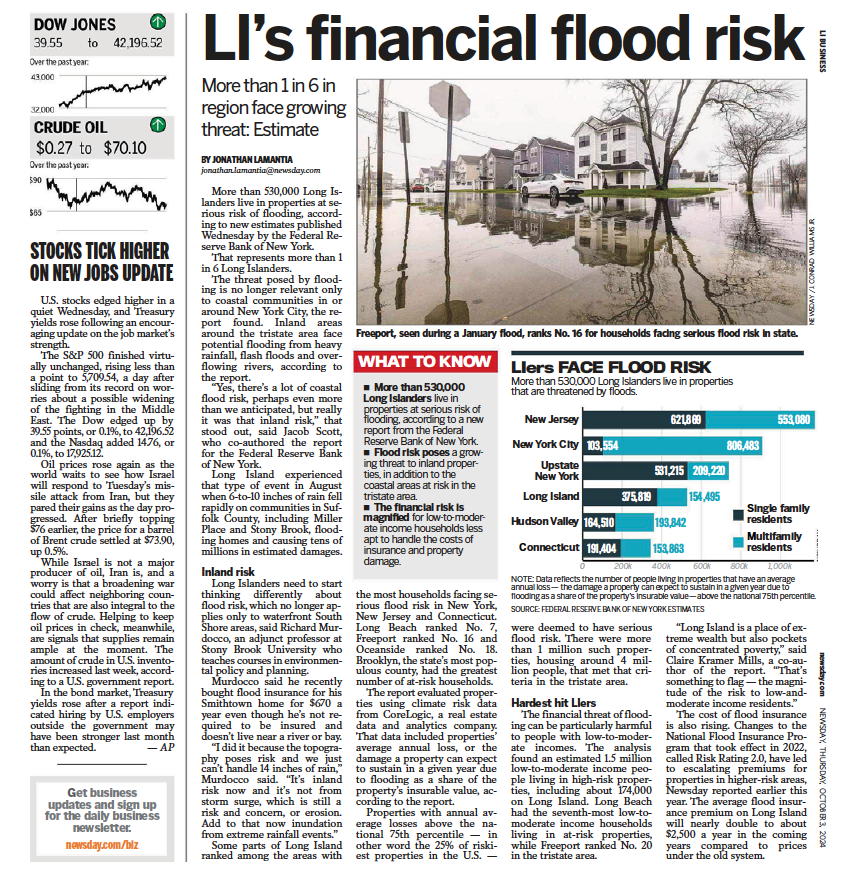The following was written for the Long Island Press. The original can be read here.
Thanks to a just-announced overhaul plan, LaGuardia International Airport could be transformed from Third World to first rate. The impacts of this massively ambitious project could resonate well beyond Queens and those 680 worn-out acres between Flushing and Bowery Bays, because it marks the welcome return of large-scale thinking to our region.
LaGuardia is notorious to travelers who have had the misfortune of navigating its cramped hallways and crowded gates. Speaking last Monday at the Sheraton Hotel in midtown Manhattan where the plan was unveiled, Gov. Andrew Cuomo repeated the obvious when he said the airport “is a terrible front-door entranceway to New York. It is a lost opportunity.”
For what it’s worth, LaGuardia has the distinction of being voted as the worst airport in the nation by Travel & Leisure, which wrote:
“The airport has the dubious honor of ranking the worst for the check-in and security process, the worst for baggage handling, the worst when it comes to providing Wi-Fi, the worst at staff communication, and the worst design and cleanliness. If there was a ray of hope, its location, which ranked 16th, was considered superior to six other airports.”
According to The New York Times, the airport is one of the busiest and tardiest for its size, having a 70 percent on-time departure rate, which ranks last out of the 29 largest American airports. Yet despite its many, many shortcomings, the airport is still an economic juggernaut. The current airport employs 11,000 workers and contributes more than $15.6 billion to our region’s economy.
“Praise” of the airport reached its zenith last year when Vice President Joseph R. Biden remarked that a blindfolded passenger at LaGuardia might think he’d landed in “some Third World country,” as the Times reported in February 2014.
Since then, it seems like the Vice President and the Governor have inspired private developers and the Port Authority of NY & NJ to create a workable plan that seeks to demolish the present Central Terminal Building and start anew. Instead of the four separate terminals today, a rebuilt airport would feature a unified passenger facility that is much closer to the Grand Central Parkway allowing for two miles of new taxiways to help clear up some of LaGuardia’s notorious congestion issues.
The project also would improve access to LaGuardia, which is too heavily auto-centric. Talk of an AirTrain extension from Willets Point, finally linking the airport to New York City Transit and the Long Island Rail Road, is also being revisited, as is launching high-speed ferry service from the Marine Air Terminal to Manhattan. Also on the table is additional investment in John F. Kennedy International Airport: the T.W.A. Flight Center, a historic landmark considered by many to be the architectural embodiment of the spirit of air travel (and where the Beatles landed in America for their first tour here), is poised to become a first-class hotel.
There is no doubt that Biden’s involvement helped usher the project past the many logistical and financial hurdles that normally hold back something of this scale and cost. It seems that once again large-scale capital investment is coming to New York – and it couldn’t have come soon enough.
As a general rule of thumb in the planning world, a city that moves is a city that grows. Whether it be roads, rails or runways, any investment in New York’s decrepit infrastructure should be celebrated. Each day, our old, deteriorating systems bear additional burdens they simply weren’t designed for. Yet, to our shame, they’ve been neglected for decades. LaGuardia is currently providing a level of service that is well out of sync with the region’s needs.
After the LaGuardia project was announced, many critics cried foul that the airport is the site of billions of dollars’ worth of new capital investment, citing the sorry state of the rail network.
Although they are correct, that doesn’t mean investment shouldn’t be made in other vital components of the region’s transportation system, especially when a new airport is just as critical, if not more so, in driving economic activity for New York City and the tri-state area as a whole. And that certainly includes Long Island.
While transit advocates argue that the money should be put toward the city’s rail and subway systems, which are getting worse by the day, the fact of the matter is that if the state has the ability to rebuild LaGuardia, it is wise to pounce.
The price of this ambitious project was first announced to be $4 billion, but shortly after the fanfare died down, analysts realistically assessed that figure to be $8 billion. They also cast doubt about the Governor’s target for completion in the year 2021, saying that 2026 is a more manageable timeframe for a project of this magnitude. The financing is to be sourced from a public-private partnership among the state, private developers and Delta Airlines. The costs are huge, but so is the project’s scope. Essentially, we’re poised to place a brand new airport a mere eight miles from Midtown Manhattan, one of the most expensive places in the world.
The benefits of a new LaGuardia are likely to include much more than just adding to the convenience of tourists as some have claimed. The airport served 27 million passengers last year, and when the overhaul is finally completed, that number will definitely increase. And it will include millions of people doing business here as well as seeing the sights.
On Long Island, the Town of Islip will come under even more pressure to attract flyers to its struggling Long Island MacArthur Airport. A reorientation may be in order so MacArthur doesn’t try to compete with LaGuardia, but rather complement its services. Both Nassau and Suffolk counties should actively step up their tourism campaigns to make our assets more attractive to visitors and draw additional economic activity that the new LaGuardia will surely bring.
Our political leaders should lobby to streamline the LIRR’s operations to Willets Point so Long Islanders can easily get from points east to the eventual AirTrain. Policymakers and planners should also conduct an analysis of how increased transit ridership to LaGuardia might further justify the need for the LIRR’s proposed double-track from Farmingdale to Ronkonkoma, and its triple track from Floral Park to Hicksville.
This is the time for thinking big like Robert Moses did, and who better to put that notion into words than Robert A. Caro, his Pulitzer Prize-winning biographer, who wrote The Power Broker about the master builder. Caro made a rare public comment about the creation of a new LaGuardia in the Governor’s press release on the overhaul project, which nicely sums up how much of a big deal the new airport will be upon completion.
“To say we’re going to take it from being a ‘third-world airport’ to being one of the greatest and newest airports, if you think about it, that’s quite a heroic vision,” Caro said. “It’s not an improvement; it’s a transformation – and it’s a transformation that, of course, New York needs. Just as the first LaGuardia airport took New York into the modern age of the 1930s and ’40s, now we have this new airport which will take New York into the 21st century.”










